The forest and rivers sustain the lifeline of the Tsou while forming their culture and order. When men hunt in the mountain on special occasions, women would make wine at home to show their appreciation for the hardworking men.
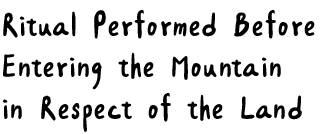
Before entering the mountain, hunters will pray to the mountain spirit for a safe journey and notify of their intent, if they mean to hunt or patrol the traps, they will also ask to be given some of the “things kept by the mountain spirit”, for the Tsou believe that animals such as the boar, the goat, or the Formosan Muntjac, are all raised and kept by the mountain spirit. In addition to the spirit of the mountain they are entering, when praying, the hunters will also invite nearby mountain spirits to come and enjoy the offerings as well.

A cup of rice wine and a leaf. After praying, spill the rice wine over the leaf.
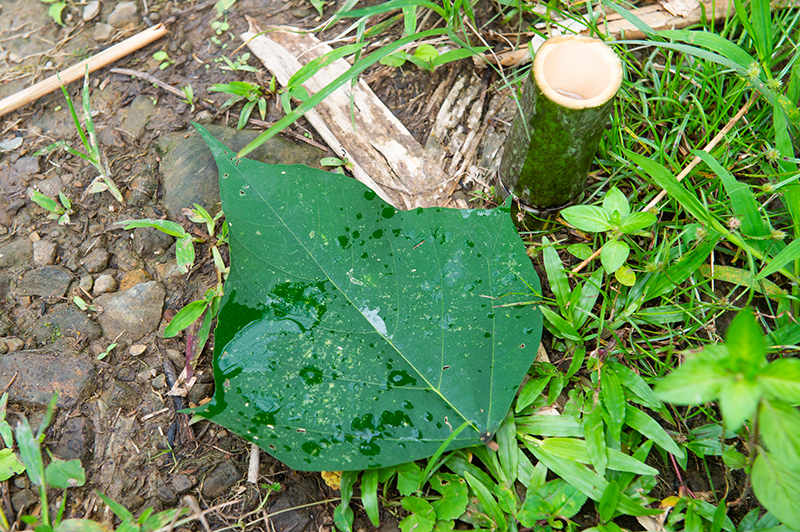

The hunter’s mark is set to notify other hunters that “this spot is already taken by someone else’s trap”, and generally placed somewhere obvious at the entry to the mountain. Hunters who see such marks will have to find somewhere else to set up their traps. This is the einu (etiquette and rules) of the Tsou.
The hunter sharpens a long piece of bamboo and sticks it into the ground, cuts openings at the top and side of the bamboo and inserts leaves or bamboo slices into the opening to signify the scope of the trap set. In the early days, each clan had its own hunting grounds, and such marks were not required since everyone understood that one should not trespass into the hunting grounds of other clans. However, with modern society and culture changing, the boundaries of hunting grounds are blurred, thus giving rise to such marking to prevent conflicts. If you would like to set traps further into the mountain from this trap, you must obtain approval from the owner of this mark.
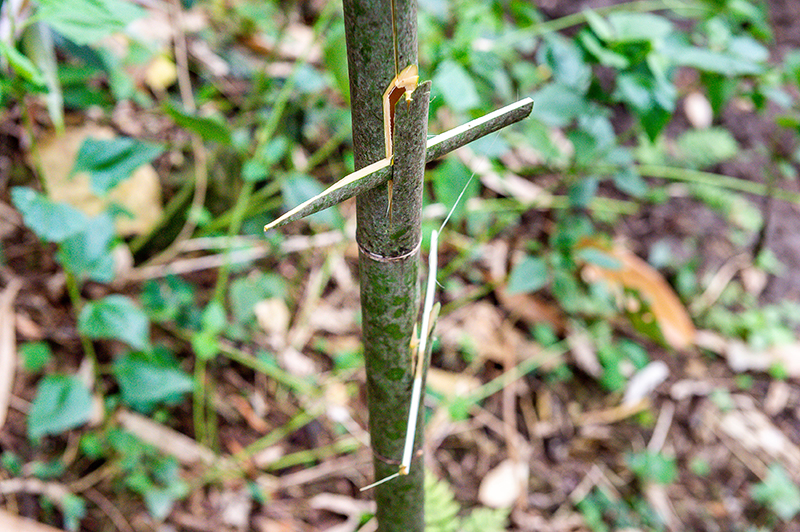
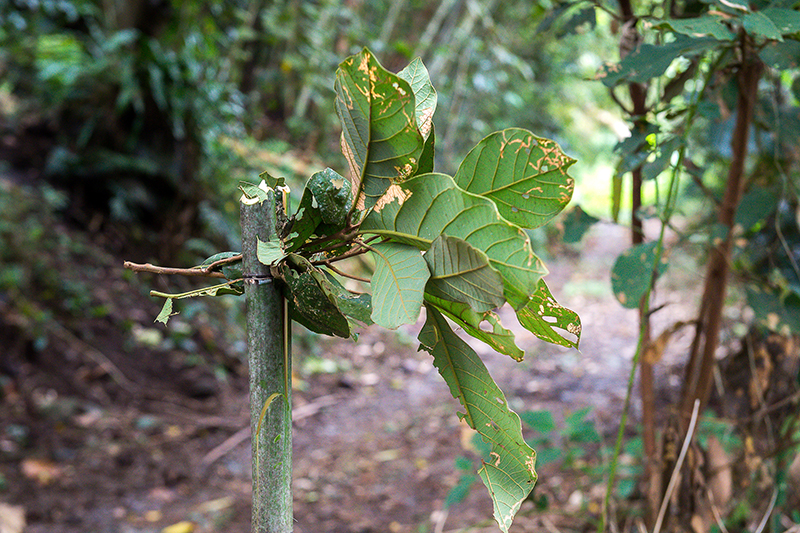
Hunters generally patrol their traps once a week, and the next time they visit, they would refresh the leaves inserted on the mark to indicate that they are “still tending to the traps”. If you see leaves that have not been refreshed for a while, it means that this hunter has not patrolled the trap for some time. According to the norms of the Tsou, the hunter’s mark can only be moved or removed by the person who placed it, no one else has the right to do so. If you touch the marks of other hunters, you might get into a fistfight. So, the hunter must remove one’s own mark if traps are no longer to be set.

The hunter would seek paths that the boar generally takes and set up traps along the easy slopes. There are mainly two types of traps, one is the leg snare for large games including the boar, the sambar, and the Formosan Muntjac, and the other is the noose for the goat, which is often set up on the cliff.

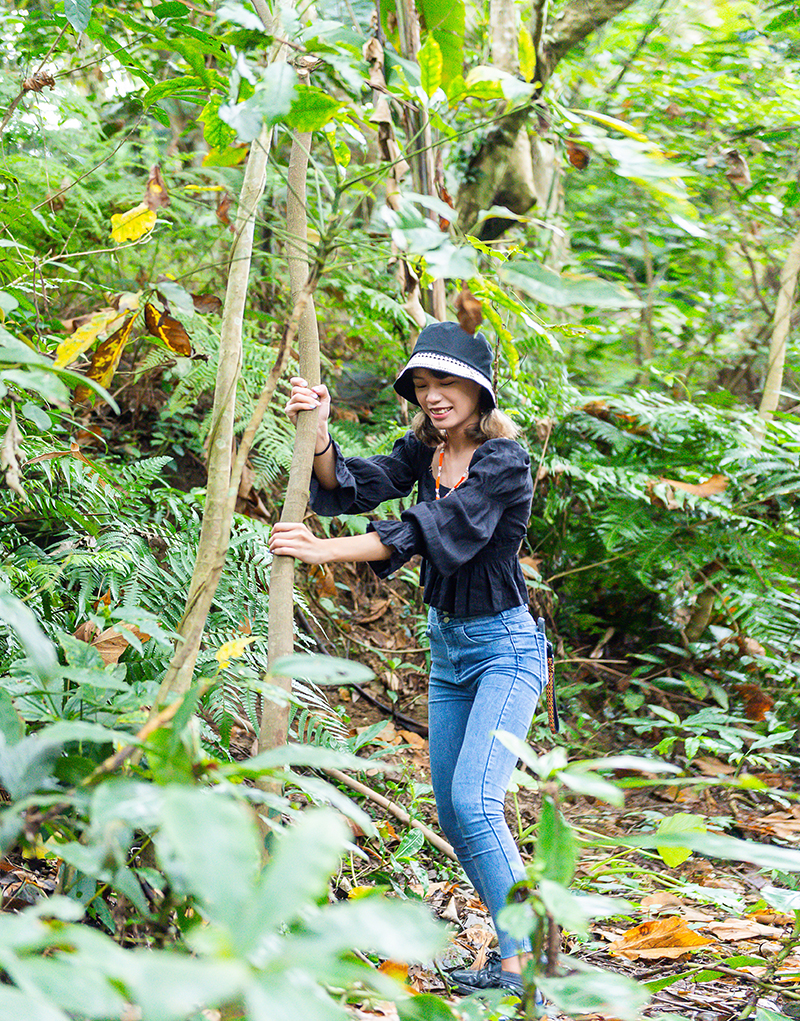
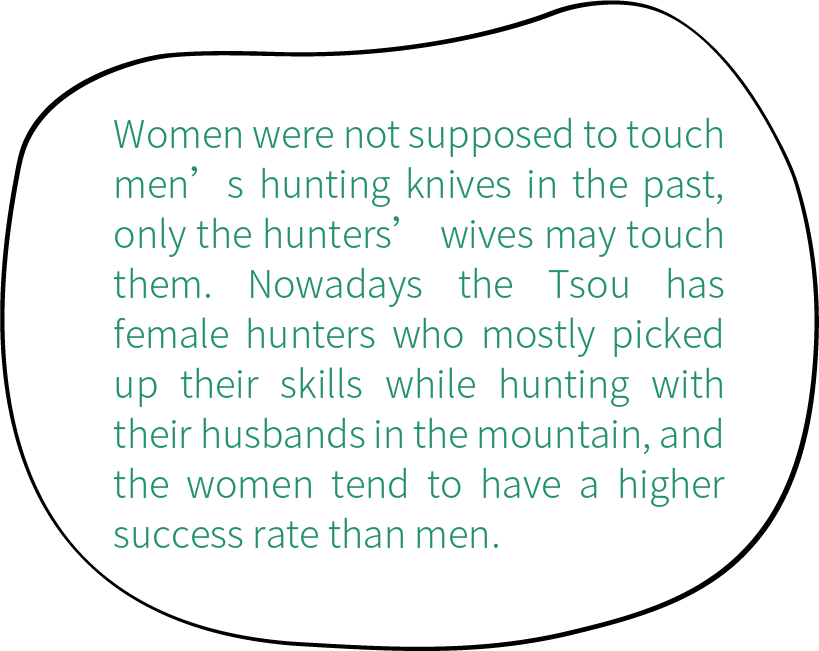
 When a hunter sees animals caught in others’ traps, he will ask around whose trap it is or bring the game back to the village to look for its owner. If the game is brought back, the owner will share half or a thigh with the hunter in appreciation.
When a hunter sees animals caught in others’ traps, he will ask around whose trap it is or bring the game back to the village to look for its owner. If the game is brought back, the owner will share half or a thigh with the hunter in appreciation.
Although we all have mobile phones now, we’re still used to knocking on people’s doors to ask. We pretty much know who will set traps there, plus it’s difficult to pinpoint the location over the phone.
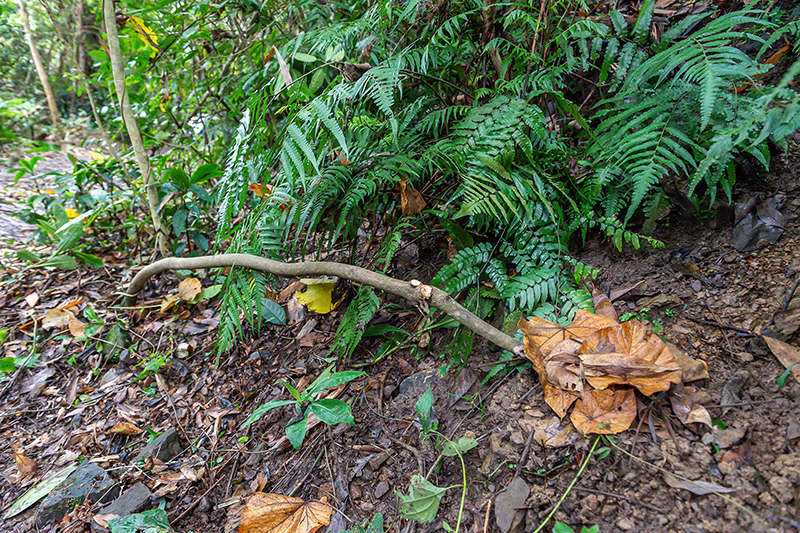
Seek nearby for unelastic bamboo sticks, what the hunters call “the rude stick”. The lack of elasticity will cause the stick to bounce once the animal steps on it and will not fix in shape due to extended bending.

Hunting is no short trip, sometimes it may even take a few days. In the old days, hunters would rest where the rock caves in under the cliff. Nowadays, they build a simple hunter’s hut to shield them from the wind and rain. Remember to build the hunter’s hut on a flat surface close to a water source so you can gather water to drink or cook, but also remember to keep a distance away from the river, in case it floods.

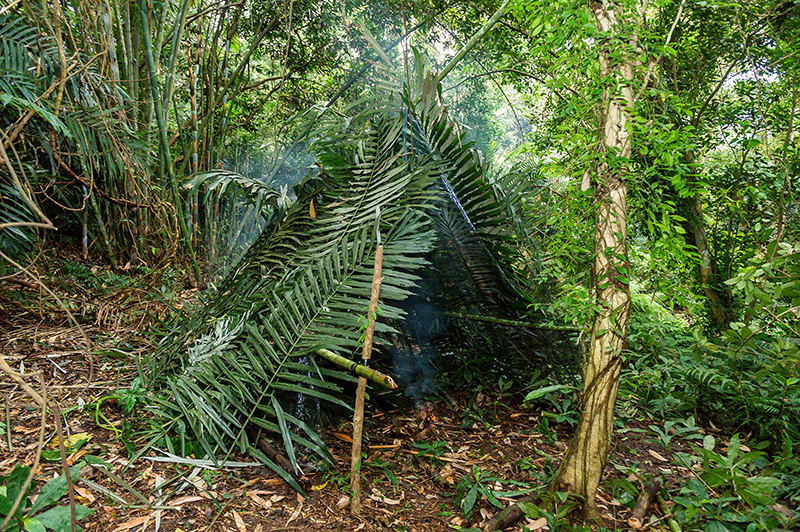
𝄪At night, the wind blows down from higher up in the mountain, so the opening to the hunter’s hut should face downhill at a comparatively higher location, making it easier to start a fire in front of the hut.
𝄪Once the canopy is secured in place with rocks, Formosan palm leaves will be used for cover (sogon grass can also be used, depending on which is more accessible), overlapping in layers on both sides of the hut as densely as possible, which can keep the light out while serving as camouflage.

Winemaking is the women’s job in the Tsou community. It is usually made for the Millet Ritual and War Ritual, or when the hunters travel far in groups for hunting. The women will start making the wine early to show their appreciation for the far-traveling hunters.
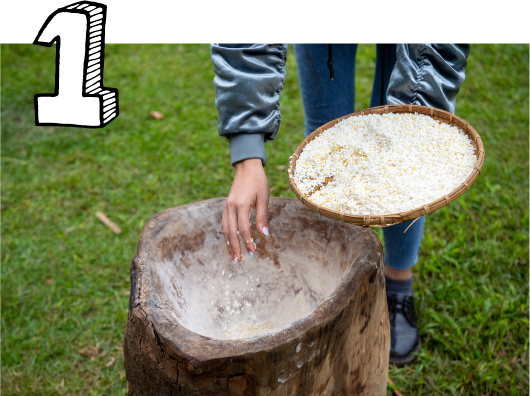
Slightly pre-soak the rice for a better crushing effect.
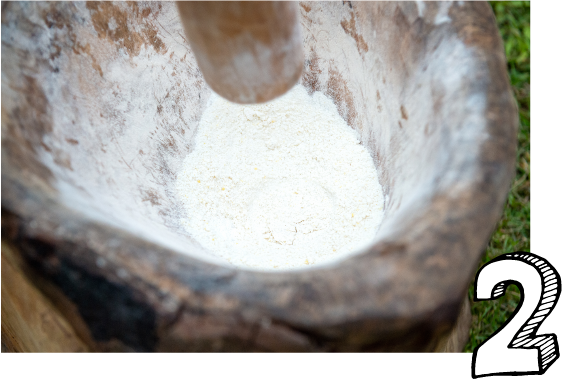
When crushing the pre-soaked rice into flour, remember to add the rice bit by bit to prevent inconsistent quality in the rice flour due to uneven force.
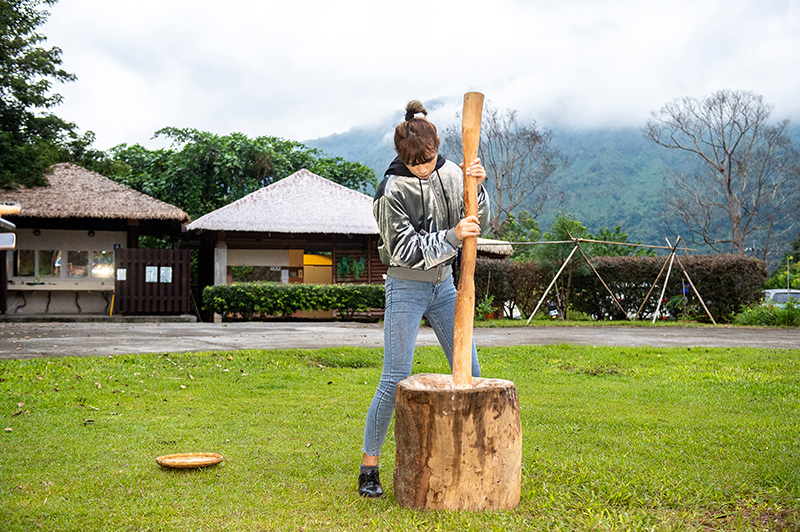
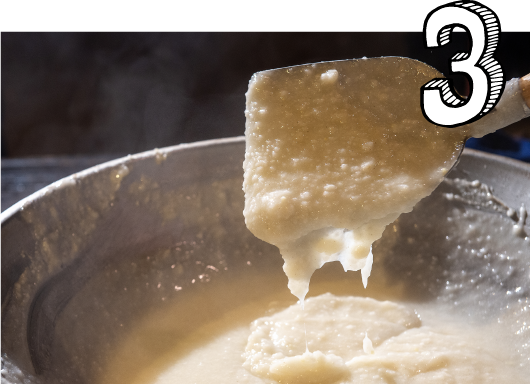
Add half of the flour into hot water and cook slowly until it thickens to a paste.
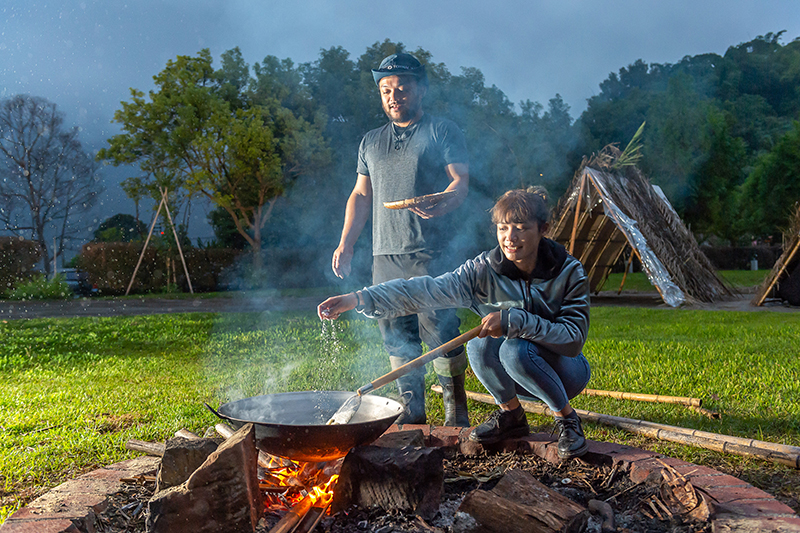
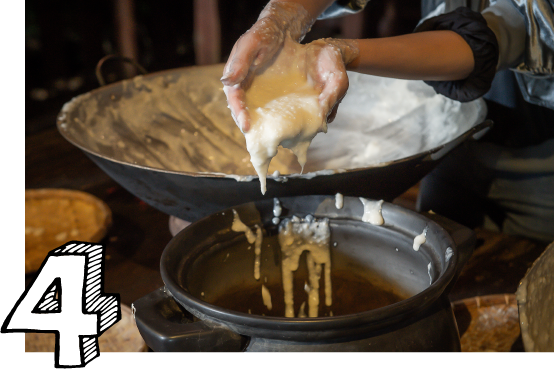
Once the rice paste cools, knead the paste by hand while adding gradually to it the other half of the flour. Nothing else is added. As the dough becomes more solid, place it into a jar, cover it with a piece of cloth, and let it rest for 3 to 5 days, then the wine is made.
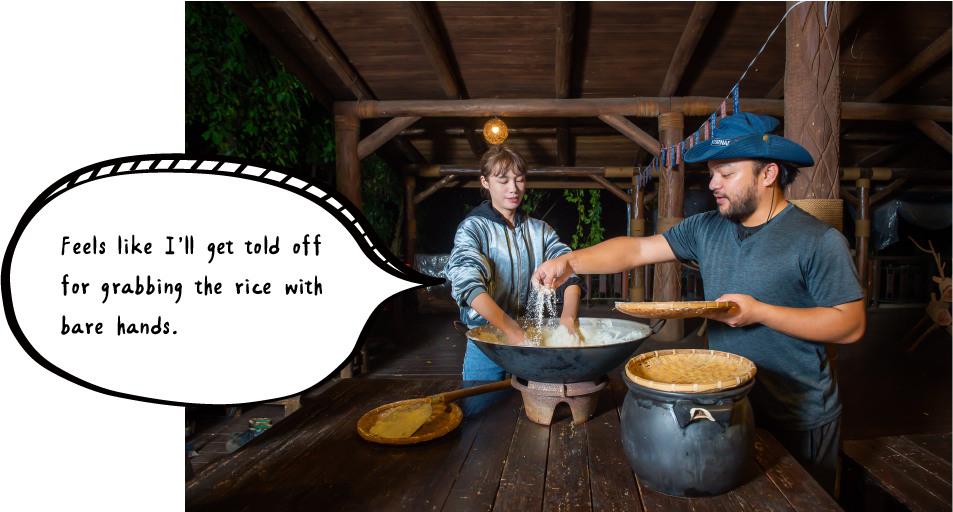
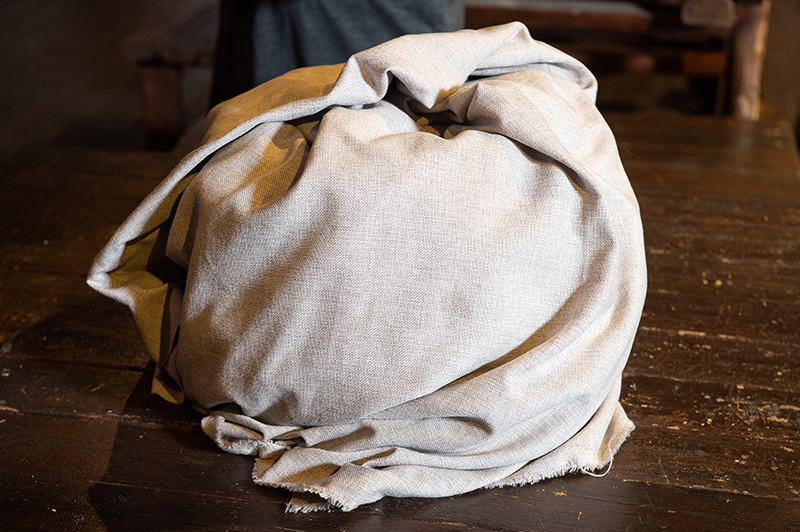

The Tsou works in silence because we believe that spirits can be found anywhere around the family house. The Millet Goddess lives in the barn of every family house. Since the Millet Goddess is weaker in power, there are guardians keeping the barn safe, much like the Door Gods of the Han culture. Also, the Millet Harvest Ritual of the Tsou is not a celebration, but rather to thank the spirits for their protection, and to communicate with them, so we tend to avoid clamoring, talking loudly, or scolding our children. The Millet Goddess doesn’t like fish, spring onion, or garlic, so we used to keep food from the mountain and rivers separate with different pots and pans.




